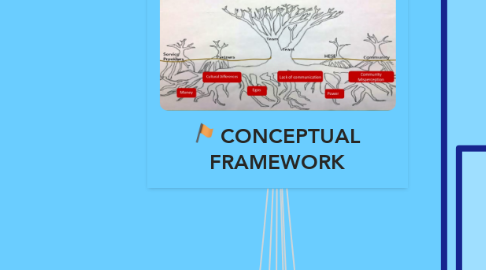
1. B2B E-Commerce Implementation In Pakistan
1.1. Website Launch
1.2. Digital Marketing
1.3. Adopt an omnichannel strategy
1.4. Building eCommerce Program
1.5. Data-driven B2B eCommerce infrastructure
1.6. Geo-Location based optimization of Content
1.7. Addressing Customer Priorities Proactively
1.8. Mapping the customer journey
2. B2B Ecommerce Overall Market Size around the globe
2.1. Situation in Developing Countries
2.2. Important players
2.3. Asian Dominance in B2B E-commerce Market
2.4. Current trends in B2B eCommerce
2.5. B2B eCommerce to be double the size of B2C
2.6. Omni-Channel Engagement
2.7. Smart Personalisation and Customisation
2.8. Focus on the Global Market
2.9. B2B Future
3. Introduction to Literature Review
4. Understanding B2B E-Commerce
4.1. Common business models in B2B marketplaces
4.1.1. Commission model
4.1.2. Subscription model
4.1.3. Listing fee model
4.1.4. Lead fee model
4.1.5. Featured list model
4.1.6. Freemium model
4.2. Business Types of B2B marketplaces
4.2.1. Vertical B2B marketplace
4.2.2. Horizontal B2B marketplace
4.3. Business Model Types of B2B marketplaces
4.3.1. B2B product marketplace
4.3.2. B2B service marketplace
4.3.3. Hybrid marketplace
4.4. Key aspects of a B2B business model
4.4.1. Key partners
4.4.2. Key resources
4.4.3. Value proposition
4.4.4. Customer relationship
4.4.5. Customer segments
4.4.6. Cost structure
4.4.7. Revenue streams
5. Benefits & Opportunities of B2B E-commerce
5.1. Industrial Benefits & Opportunities
5.1.1. Reach to new markets
5.1.2. Improved brand awareness
5.1.3. Huge Market Opportunity
5.1.4. Online Payment Options
5.1.5. Lower Costs
5.1.6. Better sales engagement: Bigger Order Values
5.1.7. Transparency and efficiency
5.1.8. Data-centric approach with ERP
5.1.9. Stay Ahead of the Competition
5.2. Economic Benefits & Opportunities:
5.2.1. Growth in Export
5.2.2. Employment Opportunities
5.2.3. GDP Growth
5.2.4. Low cost access to global market
5.2.5. CEPEC Role
6. Ecosystem for B2B Ecommerce Platform
6.1. Buyer > Seller
6.1.1. Payment > logistics
6.1.1.1. Trading Platform
6.1.1.1.1. Communication Tools
6.1.1.1.2. Search Tools
6.1.1.1.3. Data Management
6.1.1.1.4. Payment & Financial Platform > Logistics Platform
7. Top Ten Export Markets as Opportunity For Pakistan
7.1. United States $3,802,499,708
7.2. China $1,818,069,216
7.3. United Kingdom $1,728,637,316
7.4. Afghanistan $1,347,933,663
7.5. Germany $1,310,443,970
7.6. United Arab Emirates $983,575,422
7.7. Netherlands $942,801,654
7.8. Spain $922,897,997
7.9. Bangladesh $783,824,952
7.10. Italy $771,589,946
8. Pakistan Export Industry
8.1. Top Ten Export Products
8.1.1. (63) Textile Articles $4,051,510,491
8.1.2. (52) Cotton $3,498,996,688
8.1.3. (61) Apparel: Knit $2,860,767,825
8.1.4. (62) Apparel: Non Knit $2,583,732,820
8.1.5. (10) Cereals $2,325,637,400
8.1.6. (17) Sugar & Confectionery $500,788,196
8.1.7. (27) Oil & Mineral Fuels $499,354,346
8.1.8. (22) Beverages $455,266,421
8.1.9. (42) Leather Products $660,414,424
8.1.10. (25) Natural Minerals & Stone $448,492,197
8.2. Agricultural products
8.2.1. Rice
8.2.2. Wheat
8.2.3. Linen
8.2.4. Cotton
8.2.5. Fruit
8.2.6. Wheat Flour
8.2.7. Pulses
8.2.8. Vegetables
8.2.9. Vegi Oil and Sugar
8.3. Livestock
8.3.1. meat
8.3.2. wool
8.3.3. poultry
8.3.4. animal bone
8.3.5. Animal waste
8.3.6. Animal
9. Challenges of B2B E-Commerce for Pakistan Export Industry
9.1. Communication barriers
9.1.1. Wireless Technologies
9.1.2. Internet penetration
9.1.3. High bandwidths
9.2. Socio-cultural barriers
9.2.1. Transactional trust
9.2.2. Language Barrier
9.2.3. Widespread Illiteracy
9.3. Lack of government policy & support
9.3.1. E-Payment system
9.3.2. Currencies and clearing systems
9.3.3. Financial network infrastructure
9.3.4. Tax Issues
9.3.5. Absence of Cyber-Laws
9.3.6. Security Problems Associated with Online Transactions
9.3.7. Intellectual Property Rights (IPR) Issues
9.4. Business and Services Infrastructure
9.4.1. Distribution System
9.4.2. Delivery Systems
9.4.3. Business Practices Issues
9.4.4. Reengineering Logistics
9.4.5. Lack of Electricity
9.4.6. New Suppliers
9.5. Privacy & Security
9.5.1. Cyber-security
9.5.2. Identification
9.5.3. Authentication
9.6. Child Labor Issue
10. Supply Chain management
10.1. Suppliers
10.2. Payment system
10.3. Fulfillment centers
10.4. Distribution hubs
10.5. Sorting facilities
10.6. Carriers
10.7. Global E-commerce Market Challenge
10.7.1. Competition
10.7.1.1. Competitive pricing
10.7.1.2. Product Quality
10.7.1.3. Services Quality
10.7.2. Order fulfillment
10.7.3. Customer experience
10.7.4. Quality website traffic and visitor conversion
10.7.5. Digital Marketing
10.7.6. Return/refund policy
10.7.7. Finding the right market
10.7.8. Making/increasing sales
10.8. Logistics Process in E-commerce Industry
10.8.1. Container
10.8.1.1. Pallet
10.8.1.1.1. Big Boxes
10.8.2. Manufacturer/Supplier
10.8.2.1. Central warehouse
10.8.2.1.1. Parcel Hub
11. Role Of Government
11.1. Foreign Trade Policy
11.2. Subsidy Policy
11.3. The Effects of Government Policies on Businesses
11.4. Solution to Transactions Complexity
11.5. Modernization of telecommunication services
11.5.1. Modern and efficient network pricing strategy
11.5.2. Low tariffs to support trade
11.6. A legal framework to support electronic transactions
11.6.1. . Effective authentication and certification mechanisms
11.6.2. Digital signatures
11.6.3. . protection against on-line fraud
11.6.4. Strong disputes management System
11.6.5. Taxation System
11.6.6. Security and privacy protection
12. 2.12. Case Study of Alibaba Business Model
12.1. Type of Alibaba Business model
12.1.1. Intermediary Oriented Marketplace (eExchange)
12.1.2. Eye-Popping Stats
12.1.3. Alibaba B2B
12.1.4. Software vs. Warehouses
12.1.5. Alibaba and Baidu
12.1.6. Alibaba Group's Ecosystem
12.1.6.1. Alipay
12.1.6.2. Alimama
12.1.6.3. China Smart Logistics
12.1.6.4. Aliyun
12.1.7. Alibaba Entire Business Chain
12.1.7.1. China Commerce
12.1.7.1.1. Retail Marketplace
12.1.7.1.2. Wholesale Marketplace
12.1.7.2. International Commerce
12.1.7.2.1. Retail Marketplace
12.1.7.2.2. Wholesale Marketplace
12.1.7.3. Cloud computing and internet infrastructure
12.1.7.4. Others

